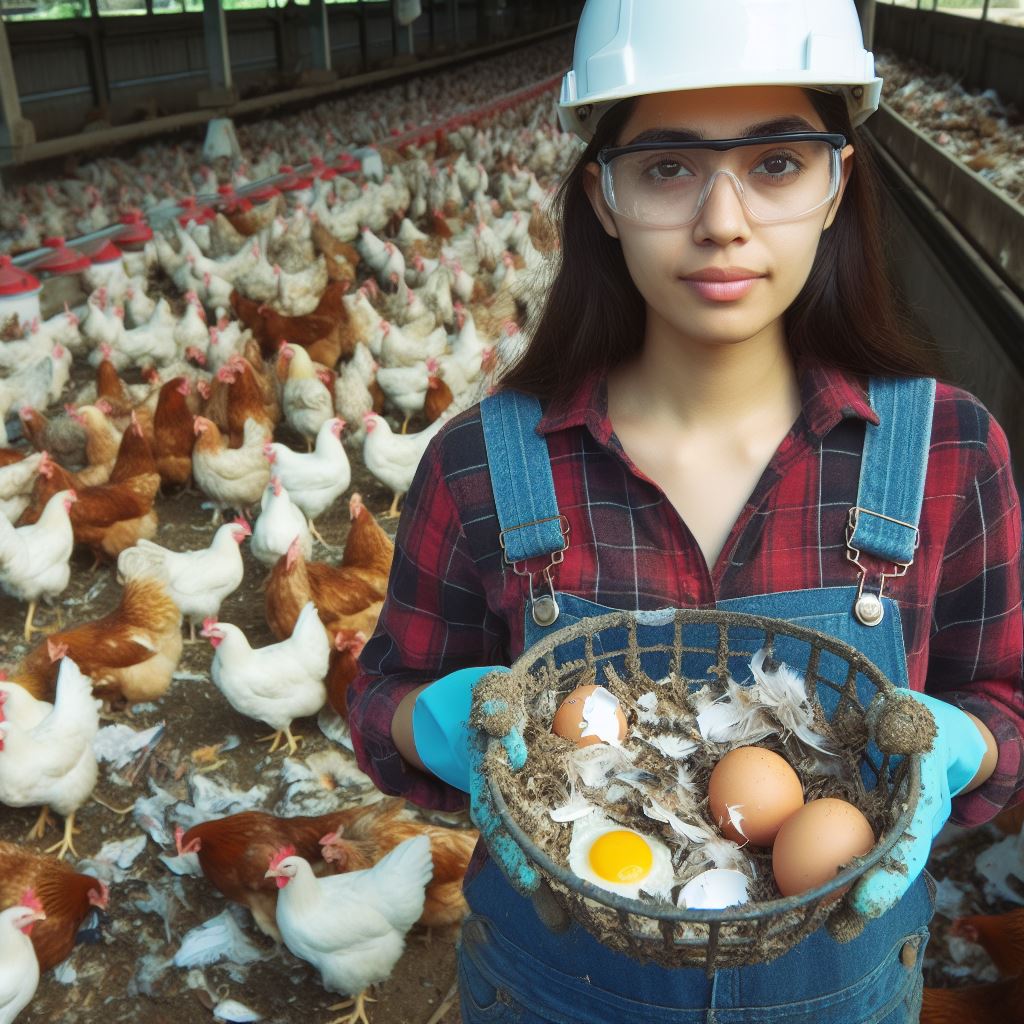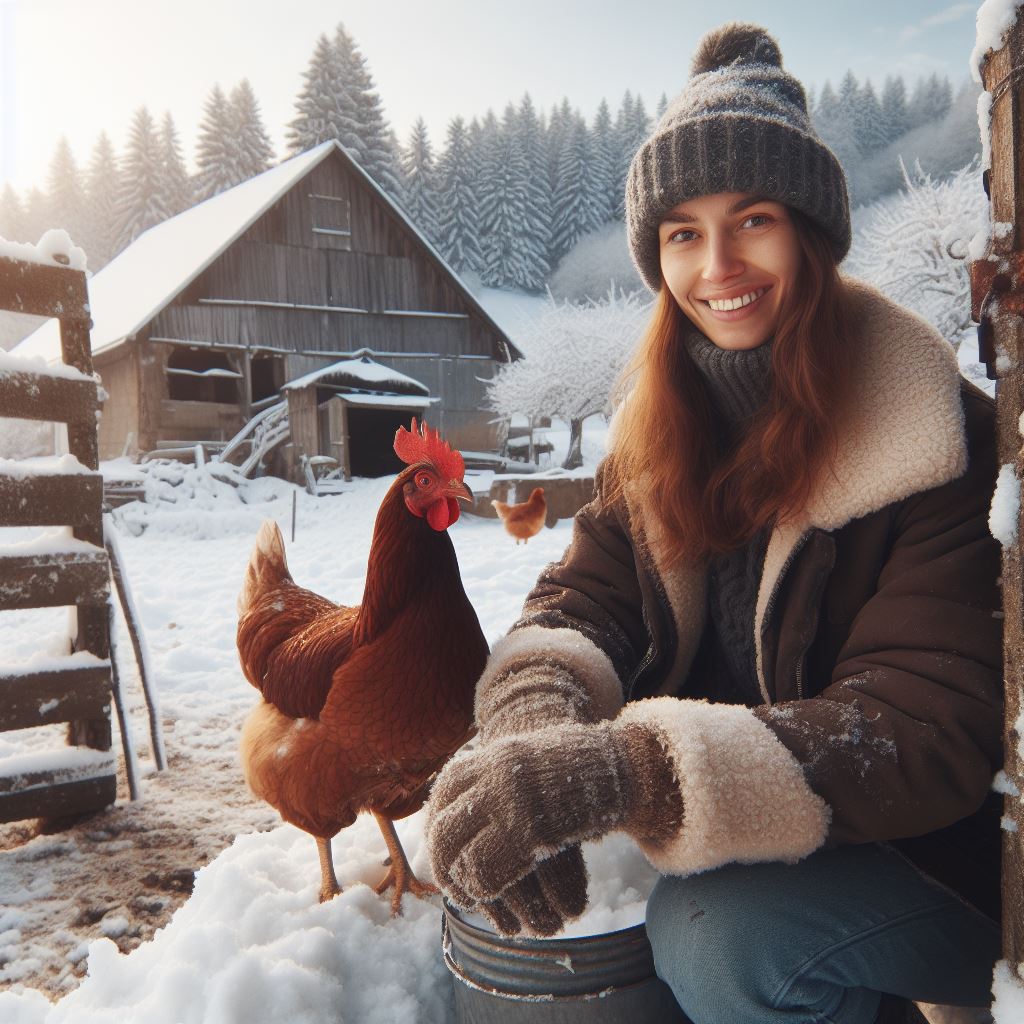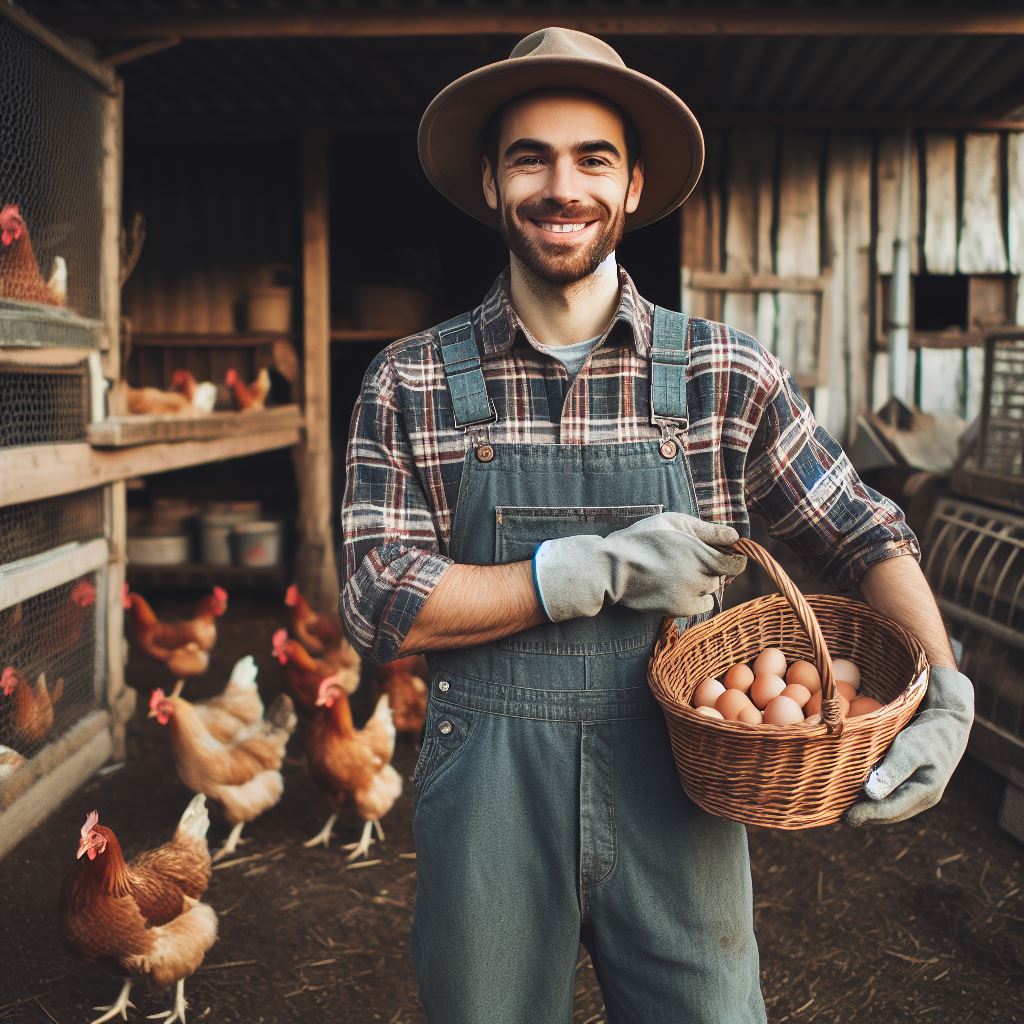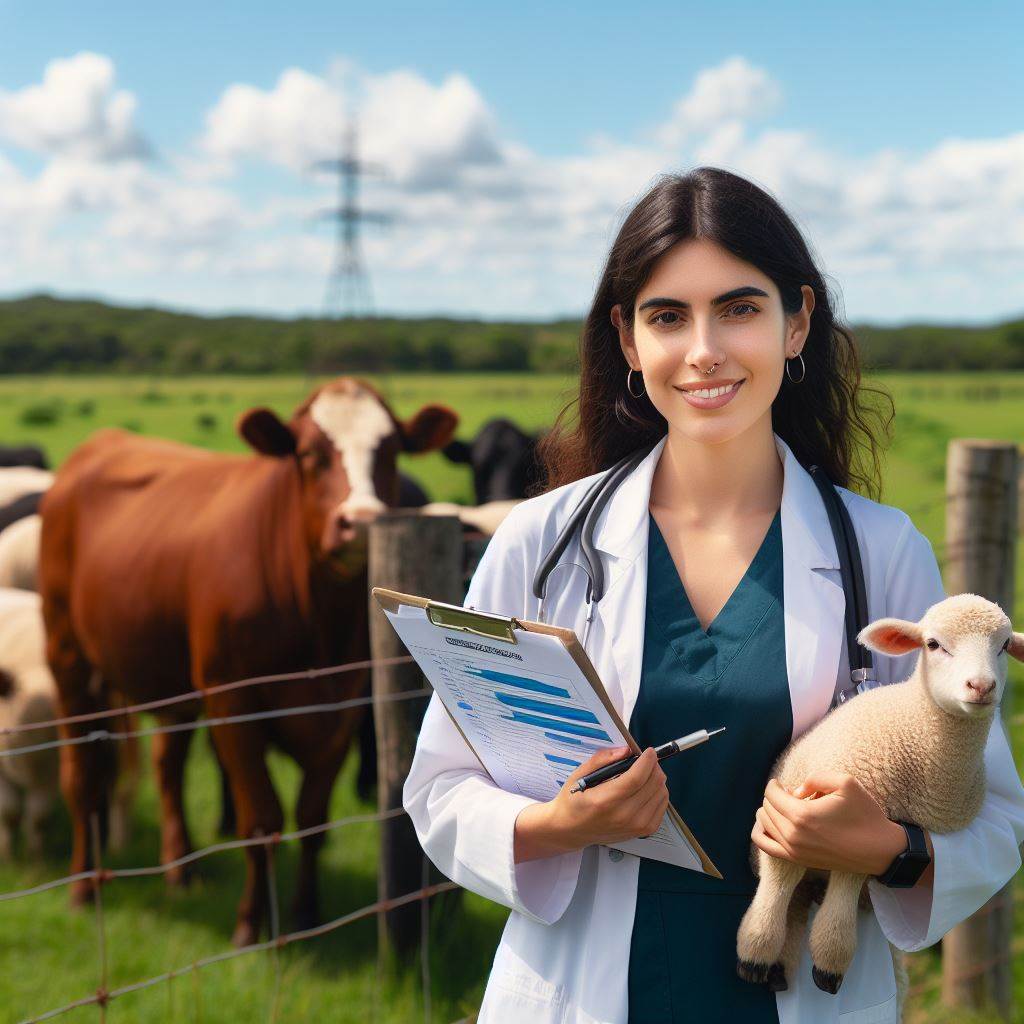Introduction
Integrating different livestock animals on the farm is important for various reasons.
It helps to optimize land use and increase efficiency in farming operations.
Integrating poultry with other farm animals can provide several benefits, but it also poses some challenges.
Importance of Integrating Different Livestock Animals on the Farm
Integrating different livestock animals, such as poultry, with other farm animals is crucial for sustainable farming practices.
By doing so, farmers can optimize the utilization of their land and resources.
This integration allows for better use of space, as different animals can utilize different areas of the farm more efficiently.
Benefits of Integrating Poultry with Other Farm Animals
When integrating poultry with other farm animals, several benefits arise.
Firstly, poultry can help control pests, insects, and weeds in the farm.
They naturally forage and eat insects and weed seeds, reducing the need for chemical interventions.
Additionally, integrating poultry with other farm animals can lead to improved soil fertility.
Poultry manure is rich in nutrients, and when combined with other animal waste, it can create a balanced and nutrient-dense fertilizer for the soil.
This leads to healthier crops and increased yields.
Furthermore, integrating poultry with other livestock animals can provide diversification in income streams.
Eggs and meat from poultry can generate additional revenue for farmers, adding value to their farming operations.
Challenges of Integrating Poultry with Other Farm Animals
However, there are challenges in integrating poultry with other farm animals.
Transform Your Agribusiness
Unlock your farm's potential with expert advice tailored to your needs. Get actionable steps that drive real results.
Get StartedOne of the challenges is disease transmission.
Poultry can be susceptible to certain diseases, and if not managed properly, these diseases can spread to other animals on the farm.
Another challenge is managing the different dietary needs of poultry and other farm animals.
Poultry require a specific diet, and their nutritional requirements may differ from other animals.
It is important to ensure that each animal receives the appropriate feed to maintain their health and productivity.
Summary
Integrating poultry with other farm animals is a beneficial practice that optimizes land use, enhances soil fertility, controls pests, and diversifies income streams.
However, it is essential to address challenges such as disease transmission and dietary needs to ensure successful integration.
Benefits of Integrating Poultry with Other Farm Animals
Integrating poultry with other farm animals can bring numerous benefits to the overall farm system.
From pest control to soil fertility, rotational grazing to enhanced biodiversity, the advantages are diverse and impactful.
Pest Control and Foraging Benefits of Chickens
Chickens are natural foragers and excellent pest controllers.
They have a keen eye for spotting insects, spiders, and other small pests roaming around the farm.
By letting chickens freely roam with other animals, the pest population can be kept in check, reducing the need for chemical pest control methods.
Moreover, chickens can also forage on weeds, seeds, and crop residues, helping to clear up the fields and contribute to the overall cleanliness of the farm.
This organic pest control method not only saves money but also promotes a healthier farm environment.
Improved Soil Fertility through Poultry Manure
Poultry manure is a rich source of nutrients like nitrogen, phosphorus, and potassium.
When chickens are integrated with other farm animals, their manure gets distributed across the land as they move and forage, providing an organic and nutrient-dense fertilizer to the soil.
The continuous addition of poultry manure improves soil fertility, enhances microbial activity, and increases organic matter content.
As a result, crops grown in such fertile soil exhibit better growth, higher yields, and improved resistance to diseases and pests.
Rotational Grazing and Pasture Management Advantages
Integrating poultry with other farm animals allows for effective rotational grazing and pasture management.
Rotational grazing involves moving animals from one grazing area to another in a planned manner.
This practice prevents overgrazing, promotes even distribution of manure, and allows the land to rest and regenerate.
Chickens, in particular, can be integrated with larger livestock, such as cows or sheep, in a rotational grazing system.
They follow behind larger animals, picking insects and parasites from the pasture, reducing their population and ensuring healthier grazing for all animals involved.
Enhanced Farm Biodiversity and Ecosystem Services
Integrating poultry with other farm animals promotes enhanced farm biodiversity and ecosystem services.
Showcase Your Farming Business
Publish your professional farming services profile on our blog for a one-time fee of $200 and reach a dedicated audience of farmers and agribusiness owners.
Publish Your ProfileThe presence of diverse animal species helps create a balanced ecosystem where each organism plays a unique role.
Insects, for example, serve as pollinators and natural pest controllers, while birds can help control weed growth and insect populations.
Integrating poultry with other animals encourages the natural interactions between different species, increasing the overall resilience and sustainability of the farm ecosystem.
Additionally, the diverse animal species contribute to the overall beauty and aesthetics of the farm, attracting wildlife and creating a harmonious environment.
Generally, integrating poultry with other farm animals brings multiple benefits to the farm system.
From natural pest control to improved soil fertility, rotational grazing to enhanced biodiversity, the advantages are manifold.
Such integration not only promotes a more sustainable and efficient farm system but also contributes to the overall well-being of the environment.
Read: Poultry Genetics: Raising Superior Chickens
Considerations for Integrating Poultry with Other Farm Animals
Integrating different species of livestock on a farm can have numerous benefits, including increased efficiency, improved soil health, and diversified income streams.
However, integrating poultry with other farm animals requires careful consideration and planning to ensure the well-being of all the animals involved.
Here are some key considerations
Compatibility of different species in terms of behavior and space requirements
- Choose species that have compatible temperaments and can coexist peacefully in the same area.
- Consider the space requirements of each species to ensure they have enough room to move freely.
- Monitor the animals closely for any signs of stress or aggression and make necessary adjustments.
Proper housing and fencing to prevent cross-contamination
- Provide separate housing facilities for each species to prevent the spread of diseases and parasites.
- Ensure that the housing is secure and predator-proof to protect all the animals from potential harm.
- Implement proper waste management systems to prevent contamination between different species.
Disease prevention and biosecurity measures
- Develop a comprehensive vaccination program for all the animals and strictly adhere to it.
- Quarantine new animals before introducing them to the existing population to prevent the spread of diseases.
- Implement strict biosecurity measures, such as disinfecting equipment and monitoring visitors, to minimize disease risks.
Managing access to food and water for different animals
- Provide separate feeding and watering areas for each species to ensure adequate access to nutrients and prevent competition or aggression.
- Monitor the feeding habits of each species and make necessary adjustments to meet their specific dietary requirements.
- Regularly clean and maintain feeding and watering equipment to prevent the spread of diseases and improve overall hygiene.
The presence of predators and protection measures
- Identify common predators in the area and implement appropriate measures to protect all the animals.
- Use fencing, electric netting, or guardian animals to deter predators and keep them away from the livestock.
- Regularly inspect the perimeter and repair any damages to ensure the safety of the animals.
Integrating poultry with other farm animals can be a rewarding experience, but it requires careful planning and management.
By considering the compatibility of different species, providing proper housing and fencing, implementing disease prevention measures, managing access to food and water, and protecting against predators, farmers can create a harmonious environment where all the animals thrive.
Read: Sustainable Poultry Farming Practices
Integrating Chickens with Other Farm Animals
Introducing chickens to other animal groups on the farm can have several benefits for both the chickens and the other livestock.
However, it is important to understand the proper integration process and the challenges involved.
Potential Benefits of Chickens with Cows, Goats, and Sheep
- Insect Control: Chickens are excellent at foraging and can help control insect populations on the farm.
- Manure Management: Chickens can help break down animal manure, reducing odors and improving soil health.
- Compost Aeration: Integrating chickens with larger livestock can help aerate and turn compost piles, accelerating decomposition.
- Disease Control: Chickens can eat parasites and possibly help control the spread of certain diseases among the livestock.
Examples of Successful Integration Strategies
- Gradual Introduction: Start by dividing the grazing area with a fence, allowing the animals to get used to each other’s presence without direct contact.
- Supervised Interaction: Once the animals seem comfortable, allow supervised direct contact in a controlled environment.
- Provide Separate Shelter: Make sure that each animal group has its own shelter to retreat to and avoid unnecessary conflicts.
- Monitor Behavior: Keep a close eye on the animals’ behavior and intervene if any aggression or bullying occurs.
Challenges and Considerations when Integrating Chickens with Larger Livestock Animals
While integrating chickens with larger livestock can be beneficial, there are certain challenges and considerations to keep in mind:
- Predator Threat: Chickens can be vulnerable to larger predators, so the integration area should be secure and have appropriate fencing.
- Feed Management: Different animals have different dietary requirements, so it is important to provide appropriate feed for each species.
- Space Requirements: Ensure that there is enough space for all the animals to roam and have access to food and water without overcrowding.
- Health Considerations: Regularly monitor the health of all animals involved and address any issues promptly to prevent the spread of diseases.
- Compatibility: Not all animal species may be compatible with chickens, so research and observe their behavior before integration.
By carefully considering these challenges and following the integration strategies, you can successfully integrate chickens with larger livestock, creating a harmonious and mutually beneficial farm ecosystem.
Read: Poultry Behavior: Understanding Your Flock
Integrating Chickens with Pigs
Mutual Benefits of Chickens and Pigs in Terms of Waste Management and Pest Control
Efficient Waste Management
Chickens and pigs have different dietary preferences, which helps in reducing waste on the farm.
Chickens consume leftover grains, vegetable scraps, and insects, while pigs can efficiently convert organic waste into manure.
Natural Pest Control
Chickens have a natural inclination to hunt and peck, making them excellent at controlling pests.
They can eat insects, larvae, and even small rodents, reducing the need for chemical pest control methods.
Symbiotic Relationship
Integrating chickens and pigs creates a symbiotic relationship where both animals benefit.
Chickens provide pest control and reduce waste, while pigs aid in manure production and can even root up the soil, preparing it for future planting.
Proper Housing and Feeding Practices when Integrating Chickens and Pigs
Separate Living Spaces
Provide separate housing for chickens and pigs to ensure their safety and prevent any aggressive behavior.
This includes providing secure coops for chickens and sturdy pens or shelters for pigs.
Access to Fresh Water
Both chickens and pigs require access to fresh water at all times.
Provide waterers that are suitable for each species and regularly monitor their condition to ensure cleanliness.
Appropriate Feeding Areas
Separate feeding areas should be established for chickens and pigs to avoid competition and reduce the risk of foodborne diseases.
Use specific feeders suitable for each animal and clean them regularly.
Balanced Diet
Ensure that both chickens and pigs receive a balanced diet that meets their nutritional requirements.
Consult with a veterinarian or livestock nutritionist to develop a suitable feeding plan for each species.
Challenges to Overcome and Recommended Strategies for Successful Integration
Aggressive Behavior
Pigs can become aggressive towards chickens, posing a risk to their safety.
To prevent this, gradually introduce the animals to each other, allowing them to become familiar and minimize any territorial behavior.
Disease Transmission
Chickens and pigs can transmit diseases to each other if proper biosecurity measures are not in place.
Regularly monitor the health of both species, isolate sick individuals, and maintain strict hygiene practices.
Predator Protection
Chickens are more vulnerable to predators compared to pigs.
Implement predator-proof fencing and secure poultry coops to protect the chickens from potential attacks.
Space Considerations
Ensure that there is enough space for both chickens and pigs to move comfortably, exercise, and exhibit natural behaviors.
Showcase Your Farming Business
Publish your professional farming services profile on our blog for a one-time fee of $200 and reach a dedicated audience of farmers and agribusiness owners.
Publish Your ProfileOvercrowding can lead to stress, aggression, and an increased risk of disease transmission.
Integrating chickens with pigs can bring numerous benefits to a farm, including improved waste management, enhanced pest control, and a symbiotic relationship between the animals.
By following proper housing and feeding practices, overcoming challenges, and implementing recommended strategies, a successful integration can be achieved, resulting in a harmonious and efficient livestock system.
Read: The Importance of Biosecurity in Poultry Farms
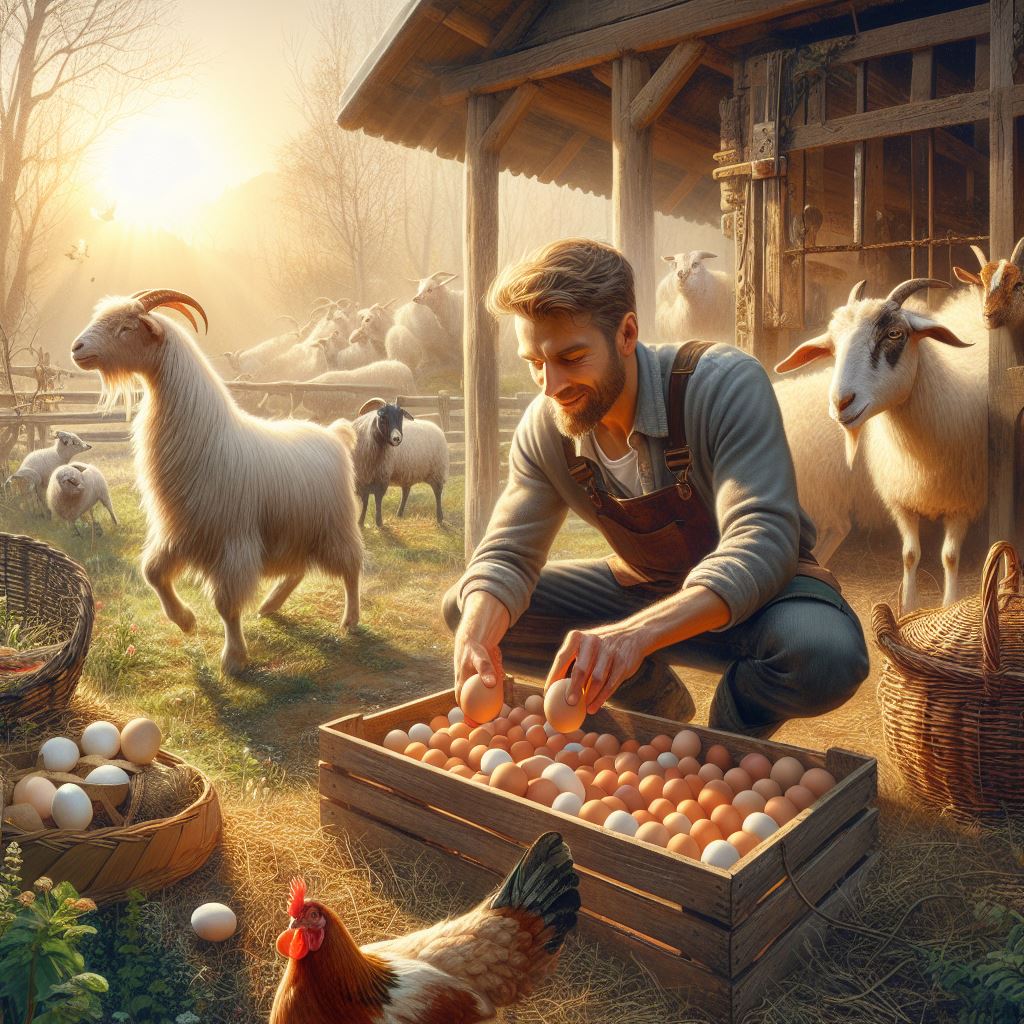
Integrating Chickens with Ducks or Geese
Integrating different farm animals can have various benefits, including improved pest control, increased foraging opportunities, and enhanced social dynamics.
When considering integrating chickens with ducks or geese, it’s essential to assess compatibility and potential advantages.
Additionally, appropriate housing, feeding, and water access arrangements must be made to ensure the well-being of all species involved.
Lastly, addressing potential conflicts and challenges is crucial for successful integration.
Compatibility and Potential Benefits
- Chickens, ducks, and geese can coexist harmoniously, benefiting from each other’s presence.
- Chickens can learn from ducks and geese to forage extensively, leading to a more diverse diet.
- The noise made by ducks and geese can act as an alarm system, alerting chickens to potential dangers.
- Ducks and geese are excellent at pest control, as they consume insects harmful to chickens.
Housing, Feeding, and Water Access
- Ensure that the coop or housing space is large enough to accommodate all species comfortably.
- Provide nesting boxes that are easily accessible for chickens but out of reach for ducks or geese.
- Install ponds or shallow water sources for ducks to swim and bathe, separate from drinking water for chickens.
- Offer a balanced diet that meets the nutritional needs of all species, considering their varying requirements.
Strategies to Address Conflicts and Challenges
- Introduce all animals at a young age to promote social bonding and reduce aggression.
- Provide multiple feeding and watering stations to minimize competition and ensure equal access.
- Monitor the flock regularly to identify and address any signs of bullying or aggression.
- Consider implementing temporary physical barriers if conflicts persist, allowing animals to see but not directly interact.
- Ensure the overall health and well-being of each species through proper veterinary care and parasite control.
Essentially, integrating chickens with ducks or geese can offer a range of benefits, such as improved foraging opportunities and enhanced pest control.
By considering housing, feeding, and water access requirements, as well as adopting strategies to address conflicts and challenges, successful integration can be achieved.
The key lies in observing the animals’ behavior, providing adequate resources, and maintaining a healthy environment for all species involved.
Gain More Insights: Swine Diets Decoded: What Your Pigs Need
Conclusion
Recap of the benefits of integrating poultry with other farm animals
Integrating poultry with other farm animals offers numerous benefits, as discussed throughout this blog post.
It is important to remember key considerations such as species compatibility and proper housing and management.
We encourage farmers to explore and experiment with integrating different livestock species to enhance farm productivity and sustainability.
Key considerations for successful integration
By integrating poultry with other animals, farmers can maximize resources, improve soil health, and increase overall farm profitability.
This approach also helps to diversify farm income and reduce dependency on a single livestock species.
Furthermore, integrating poultry with other animals promotes natural pest control and reduces the need for chemical interventions.
Integrating different species also allows for efficient use of pasture, as different animals graze on different types of vegetation.
Overall, integrating poultry with other farm animals is a proven strategy for a more sustainable and profitable farming operation.
Encouragement for farmers
So, whether it’s integrating chickens with goats, ducks with pigs, or any other combination, the possibilities are endless.
As we conclude this blog post, we hope that farmers will be inspired to explore the potential of integrating livestock species on their farms.
Remember, successful integration requires careful planning, observation, and adaptability to ensure the well-being of all animals involved.
So go ahead, take the step towards integrating livestock and reap the benefits of a more holistic and sustainable farming system!

